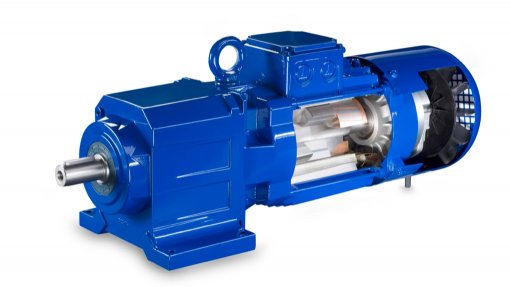
INTEGRATED EFFICIENCY By examining each component within the mechanical section of the motor and drivetrain, and enhancing its design, further efficiencies and savings can be made
At the forefront of engineering considerations for motors are aspects such as efficiency, reliability and total cost of ownership; however, to deliver the maximum benefits, it is ideal to examine items of equipment as a whole, instead of individually, says geared motors company Bauer Gear Motor.
Considering motors and transmission components and combining this with the best technology makes it possible to achieve more significant savings and efficiencies of operation of these motors, notes Bauer Gear Motor energy efficiency solutions product manager Markus Kutny.
He says in recent years, emphasis has been placed on improvements that have been made in electric motor efficiency, owing, in part, to the changing regulations, which has focused manufacturers and customers alike.
However, in terms of overall efficiency within drive systems that are powered by electric motors, the mechanical system also needs to be considered for efficiency improvement, as it possesses a significant potential for enhancement.
He notes that, between the electric motor and the final process of the motor, there is usually a series of mechanical drives, gears, couplings and bearings, which transmit the mechanical power supplied by the motor, to other components.
“By examining each component within this mechanical section and enhancing its design, further efficiencies and savings can be made,” notes Kutny.
Improved Motor Efficiency
Stating that 96% of the lifetime costs of an electric motor are associated with the energy consumption, Kutny emphasises the importance of the overall efficiency, compared with the initial purchase cost in terms of importance of the total cost of ownership.
Kutny adds that permanent-magnet synchronous motors (PMSM) already fulfil the requirements of the soon-to-be-implemented IE4 classification, showing IE4 motors’ potential to achieve energy savings of up to 40%, compared with IE2 inverter-driven squirrel cage motors.
“PMSMs offer considerably improved efficiency, when compared with induction motors, even under partial load conditions; and extremely high efficiency underrated operating conditions.
They also have a considerably higher power density, which, for geared motors, yields higher system efficiency with minimal installation volume,” he states.
The synchronous design of PMSMs means that not only is it superior to converting electrical energy into mechanical power, but also that they offer the added benefit of maintaining constant speed independent of the load.
This design offers a total reduction of heat loss from the rotor, reduces total losses by about 25% and increases total efficiency by 10%, or more.
“For the PMSM user, this improved performance translates into lower total cost of ownership, a reduction in carbon dioxide emissions, and ongoing savings that buffer against future increases in energy costs,” says Kutny.
To provide supporting evidence of the improved efficiency of PMSM motors, Bauer Gear Motor participated in a direct comparison where an inverter-driven asynchronous motor (ASM) and a permanent magnet motor were set up to perform identical tasks.
The comparison was conducted on an operational wastewater treatment plant, in Germany, with both motors powering a disc thickener for seven hours every day.
The same frequency inverter, which was programmed to monitor the loads on each motor, was used to ensure that they ran efficiently. Each drive system used the same gearbox to ensure that any differences in efficiency could only be attributed to the motors.
The trial demonstrated that the PMSM delivered a 40% saving in energy consumption against the ASM, which, when projected over a four-year period, would save 1 022 kW.
Drivetrain and Drive Couplings
Further efficiencies can be gained by ensuring the drivetrain is properly integrated into the application it is tasked to perform, requiring an in-depth understanding of the specific industry.
Less efficient designs, such as worm-geared motors, can be replaced with integral helical bevel geared motors, which are more efficient and provide a longer service life. This approach removes the need for a coupling and bearing, thereby providing near-perfect transmission efficiency, according to Kutny.
Forming a crucial link between the electric motor and driveshaft, the coupling can have a significant influence on the performance of the equipment, he concludes.